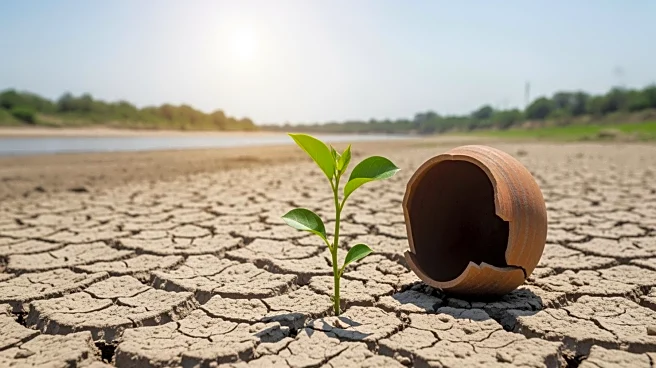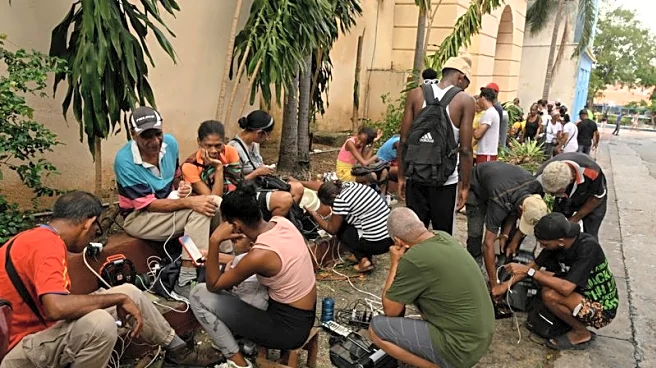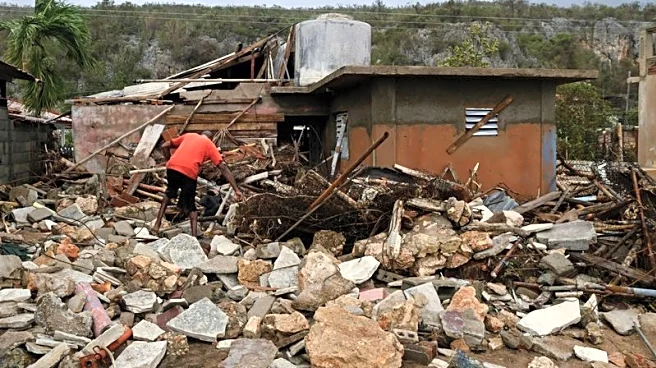What's Happening?
Zimbabwe is experiencing one of its worst droughts in decades, exacerbated by the El Niño climate phenomenon. The drought has led to widespread crop failure and water shortages, affecting millions of people who rely on subsistence agriculture. In response
to the crisis, local communities are developing innovative solutions to store water, such as building rainwater storage tanks using locally available materials like chicken wire, canvas, and cement. These efforts come as U.S. aid, which previously supported agricultural and food security projects in Zimbabwe, has been significantly reduced under President Trump's administration.
Why It's Important?
The reduction in U.S. aid has left Zimbabwe vulnerable at a critical time, as the country grapples with severe drought conditions. The lack of international support could exacerbate food insecurity and water shortages, impacting millions of Zimbabweans. Local innovations in water storage are crucial for building resilience against future droughts, but the absence of foreign aid may hinder broader efforts to address the crisis. The situation highlights the importance of sustainable solutions and international cooperation in tackling climate-related challenges.
What's Next?
Zimbabwe will need to continue developing local solutions to mitigate the impacts of the drought. The government and international organizations may need to explore alternative funding sources to support resilience-building initiatives. As the drought persists, communities will likely face ongoing challenges in accessing food and water, necessitating further innovation and adaptation. The international community's response to Zimbabwe's crisis could set a precedent for how similar situations are handled in other regions affected by climate change.
Beyond the Headlines
The drought in Zimbabwe underscores the broader issue of climate change and its impact on vulnerable regions. It raises ethical questions about the responsibility of wealthier nations to support those facing environmental crises. The situation also highlights the need for sustainable agricultural practices and infrastructure development to reduce reliance on rain-fed farming. Long-term solutions will require a collaborative approach, integrating local knowledge with international expertise and resources.















